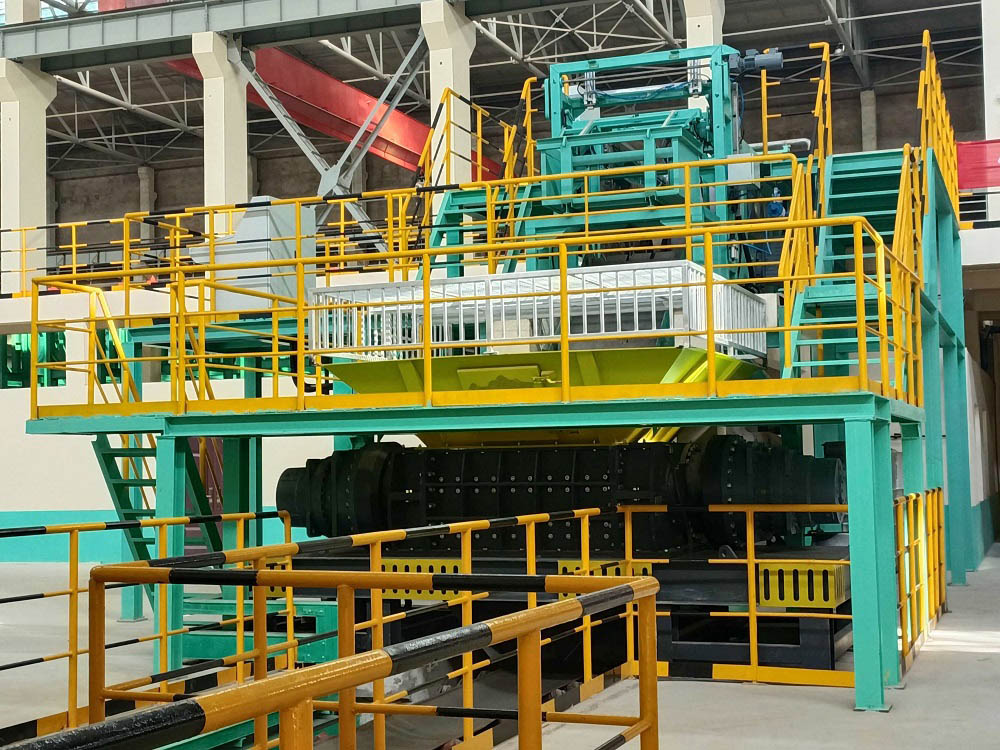The double shaft shredder is a device commonly used for the processing of waste materials. The two rows of blade shafts rotate in opposite directions to achieve the effect of shearing and tearing materials. The double shafts are independently driven, with low speed and high torque, and will not entangle or jam the shafts. The production efficiency is high and it is suitable for light and thin waste metal materials such as scrap steel, scrap iron, and scrap aluminum, as well as waste materials such as plastics, cardboard, straw, and household garbage. When using a double-shaft shredder, regular maintenance is very necessary, which can not only increase the service life of the machine, but also improve the working efficiency and safety performance of the equipment. So how to maintain a double-shaft shredder? Kowloon Machinery will introduce you the maintenance method of double-shaft shredder in detail.
 1. Equipment cleaning
1. Equipment cleaning
·Daily cleaning: Regularly remove dust and debris on the surface and surrounding of the equipment to keep the equipment clean. This helps reduce the erosion of dust on the internal parts of the equipment and reduces the risk of equipment failure due to excessive dust accumulation.
·Main cleaning: Pay special attention to the cleaning of the feed port, discharge port and transmission parts (such as bearings and chains) to ensure that there is no blockage and oil pollution. Use professional tools to clean the residual material in the shredding cavity, pay attention to the gap between the blades and the blade head to prevent the accumulation of impurities from affecting the cutting effect.
2. Lubrication maintenance
·Check the lubricating oil level: Check the lubricating oil level regularly to ensure that it is within the standard range to avoid aggravated wear caused by insufficient lubrication.
·Replace the lubricating oil: Replace the lubricating oil regularly, clean the oil tank and filter, and keep the lubrication system clean and unobstructed. Use lubricating oil of uniform standards to avoid mixing lubricating oils of different brands or types to cause corrosion.
·Check the lubricating pipeline: Check the lubricating pipeline and joints to ensure that there is no leakage, and promptly discover and deal with potential problems.
3. Transmission component inspection
·Operation status monitoring: Regularly check the operation status of transmission components such as motors, reducers, bearings, etc. to ensure that there is no abnormal sound and vibration. This helps to promptly detect and deal with wear or failure of transmission components.
·Tension adjustment: Check the tension of transmission components such as chains and belts, adjust them in time and maintain appropriate tension to ensure stable transmission efficiency.
4. Blade maintenance
·Sharpness check: Check the sharpness of the blade regularly, and sharpen or replace it if necessary. A sharp blade can improve cutting efficiency and reduce energy consumption.
·Gap adjustment: Check the gap between the blade and the blade holder to ensure that the gap is appropriate to avoid collision between the blade and the blade holder and cause damage.
·Tightening bolts: Check the tightening of the blade fixing bolts to ensure that the blade is firm and reliable to prevent it from falling off or being damaged due to looseness.